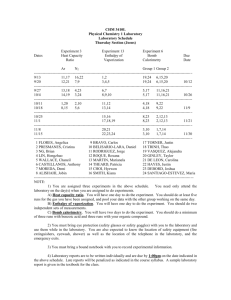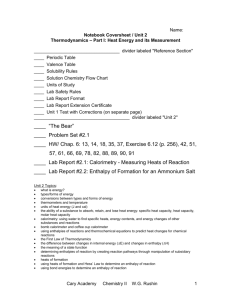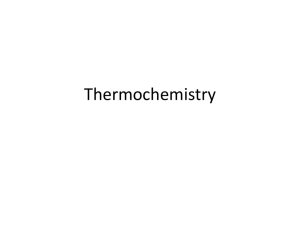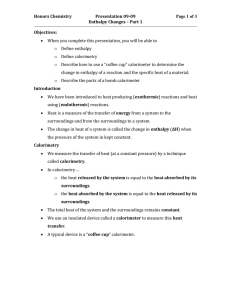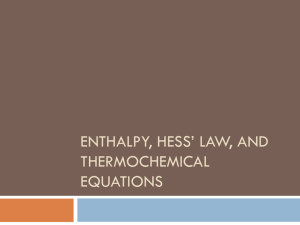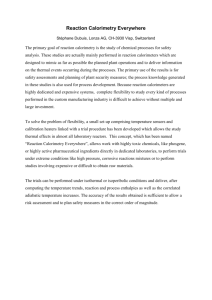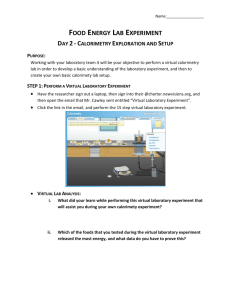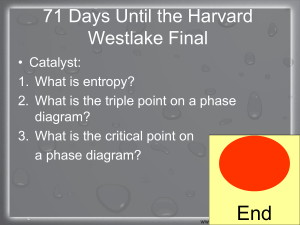Heat, Enthalpy, Temperature
advertisement
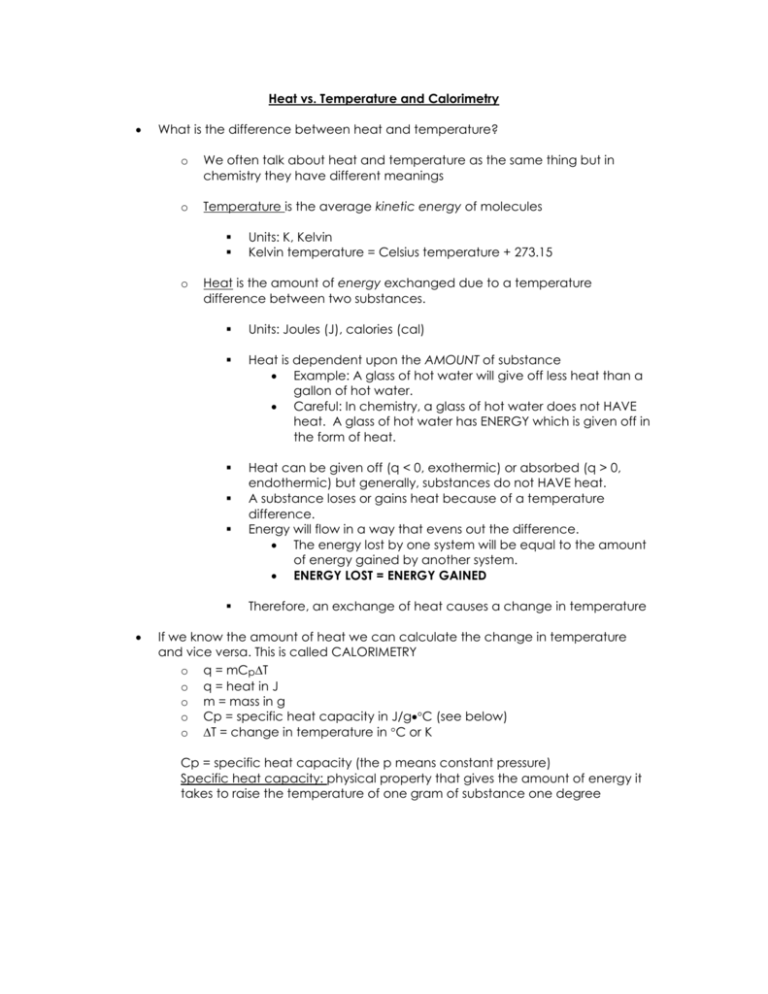
Heat vs. Temperature and Calorimetry What is the difference between heat and temperature? o We often talk about heat and temperature as the same thing but in chemistry they have different meanings o Temperature is the average kinetic energy of molecules o Heat is the amount of energy exchanged due to a temperature difference between two substances. Units: Joules (J), calories (cal) Heat is dependent upon the AMOUNT of substance Example: A glass of hot water will give off less heat than a gallon of hot water. Careful: In chemistry, a glass of hot water does not HAVE heat. A glass of hot water has ENERGY which is given off in the form of heat. Heat can be given off (q < 0, exothermic) or absorbed (q > 0, endothermic) but generally, substances do not HAVE heat. A substance loses or gains heat because of a temperature difference. Energy will flow in a way that evens out the difference. The energy lost by one system will be equal to the amount of energy gained by another system. ENERGY LOST = ENERGY GAINED Units: K, Kelvin Kelvin temperature = Celsius temperature + 273.15 Therefore, an exchange of heat causes a change in temperature If we know the amount of heat we can calculate the change in temperature and vice versa. This is called CALORIMETRY o q = mCpT o q = heat in J o m = mass in g o Cp = specific heat capacity in J/gC (see below) o T = change in temperature in C or K Cp = specific heat capacity (the p means constant pressure) Specific heat capacity: physical property that gives the amount of energy it takes to raise the temperature of one gram of substance one degree Example: If you drink a cold glass of water (250 g) at 0 C, how much heat is transferred to the water as it warms to 37 C. The specific heat of water is 4.187 J/gC q = mCpT, m = 250 g, Cp = 4.187 J/gC T = 37 – 0 = 37 C q= (250 g) (4.187 J/gC) (37C) = 1.5466 x 105 J = 150 kJ How is the amount of energy in food measured? o Bomb Calorimetry o Food is burned to release energy (like burning wood for fire) o The energy is absorbed by water o Using specific heat of water and temperature change of known mass of water the heat can be calculated. o This amount of heat is the amount of energy that is available for your body. It is what determines how many calories are in food. Example: See example 9B on page 320 in your book At constant pressure, heat is equal to the change in enthalpy, H Enthalpy (symbol H)is the total energy of a system (kinetic + potential) From hear on out, I may interchange heat, energy and enthalpy.
